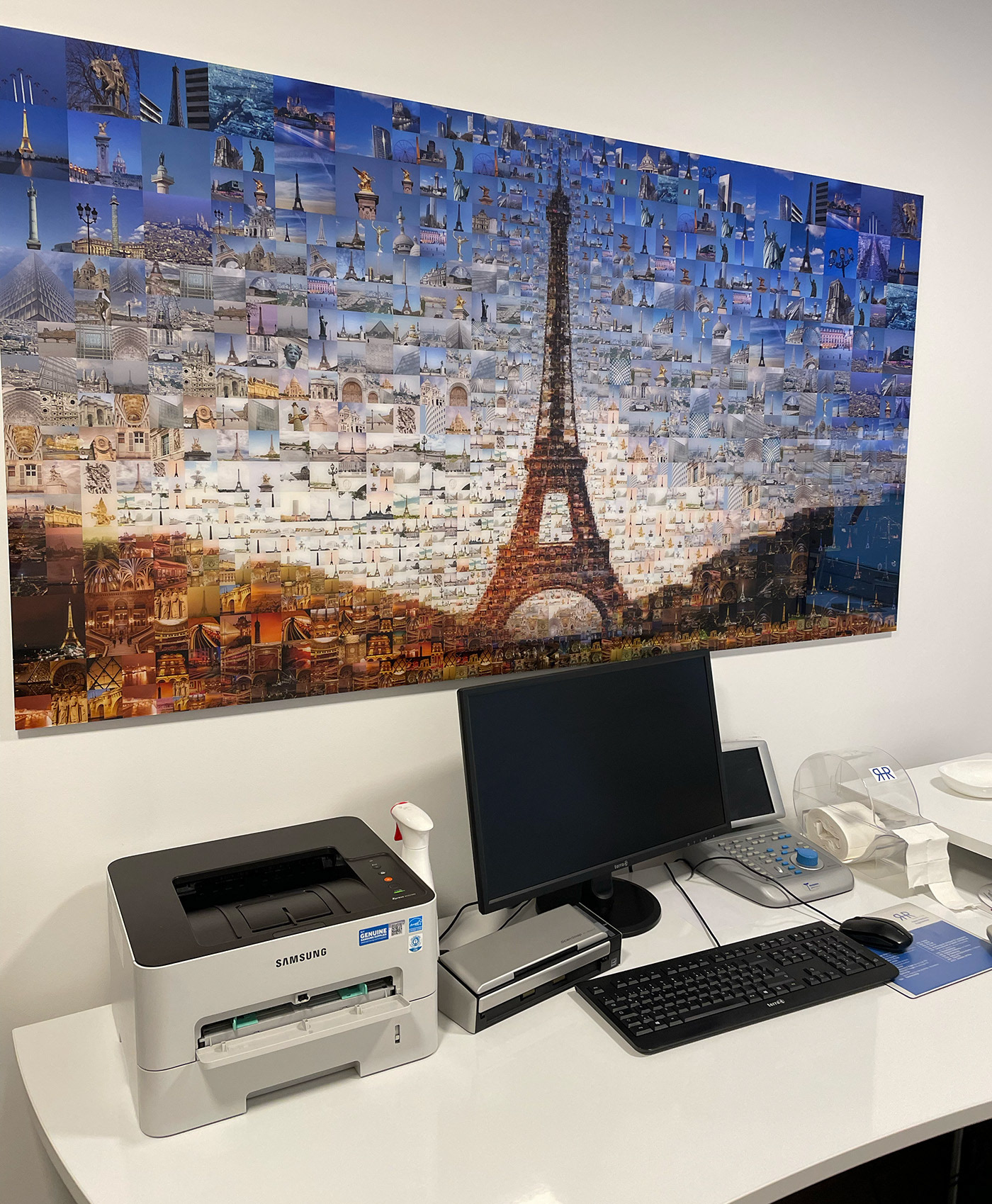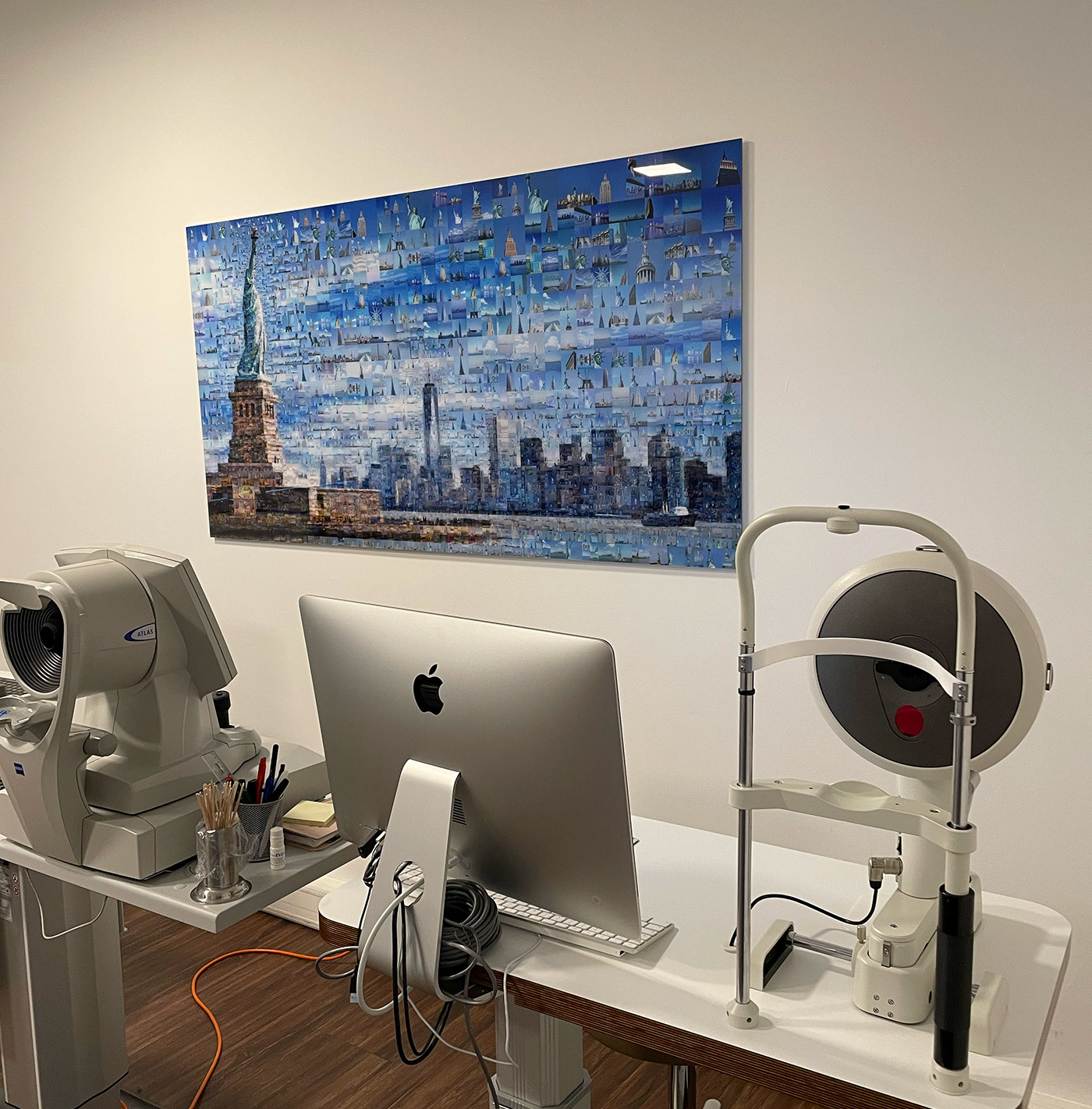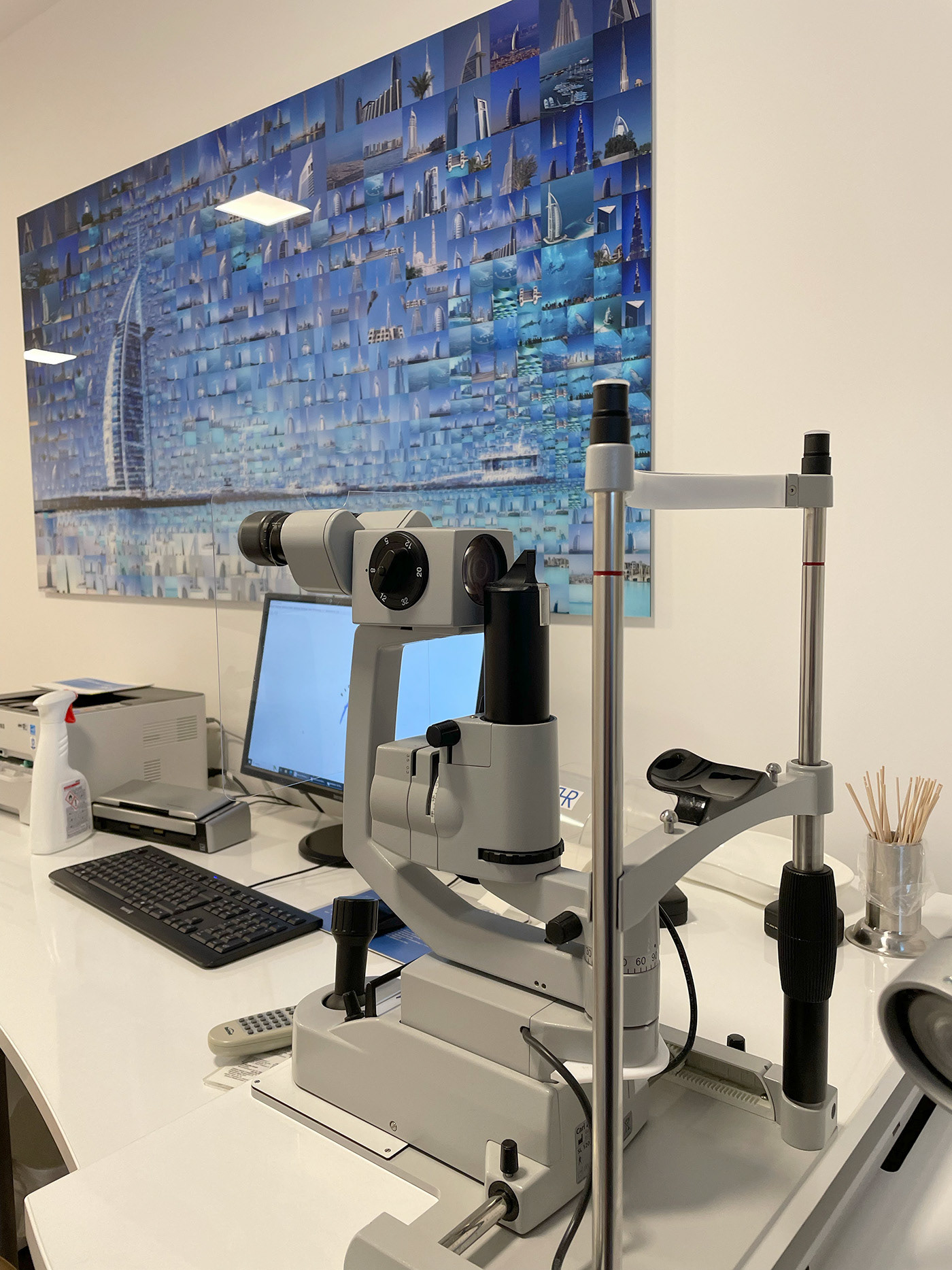
Photo collages of world cities in a clinic interior

Photo collages of world cities in a clinic interior

Photo collages of world cities in a clinic interior

—visually, emotionally, and authentically?
• Enhanced Workplace Environment: Offices adorned with art are perceived as more welcoming and stimulating. A study by Dr. Craig Knight at the University of Exeter found that employees in enriched office spaces were 17% more productive than those in lean environments .
• Improved Employee Well-being: Exposure to art in the workplace has been linked to reduced stress levels and increased job satisfaction. Research indicates that 69% of employees believe that having visually striking art in the office contributes positively to their well-being.
• Art in the workplace isn’t merely decorative; it’s a catalyst for a more engaged, productive, and innovative workforce.
A mosaic mural for the Delta Airlines Sky Club in Seattle
Three dimensional installation of a city photomosaic in Seattle airport
Showcasing the intricate details of my mosaic mural installation at the headquarters of Cypriot politician Konstantinos Letymbiotis. This artwork combines elements of community, history, and storytelling to create a visually engaging piece.
Joining forces with Konstantinos Letymbiotis at the election watch gala. The mosaic mural I created serves as a stunning backdrop, reflecting themes of unity and collaboration during this significant political event.
Mosaic murals for the USA House in Rio 2016 Summer Olympics
Mosaic wall for The USA Olympic Team.
A mosaic portrait of Nobu Matsuhisa made out with his most iconic dishes
A limited number of artworks are used as gifts for Nestlé company retired employees
Limited edition mosaic prints displayed in the therapy room of Phexmed wellness center
For the 40th anniversary of Quest Group, the Greek Apple Authorised Distributor a limited edition artwork was gifted to key figures.
A mosaic interpretation of the logo has been minted as NFTs and is part of the company's significant art collection
A mosaic illustration for a Cypriot football team in an FC boutique
Paphos FC dining room decoration
2. Engage Stakeholders: Involve employees in the selection process to ensure the art resonates with the workforce.
3. Collaborate with Professionals: Work with art consultants or curators to select pieces that align with the company’s goals and culture.
4. Rotate Exhibits: Regularly updating the artwork can keep the environment fresh and continually inspire employees.
5. Measure Impact: Assess the effects of the art program on employee satisfaction, productivity, and overall workplace atmosphere.
Moments Gate: A mosaic mural for the new Delta Airlines Sky Club in San Francisco International Airport (SFO)
The work was further developed to create a three-dimensional relief construction
A series of mosaic portraits of computing pioneers to decorate the rooms of Shashi Shoreline Hotel in Silicon Valley
A mosaic portrait of Vassilis Spinos, the founder of the Elite Strom
2. The Top 40 Corporate Art Collections in the World in 2025, Ella Forster. Artelier
3. Corporate art collections: blending art with business identity, Pavillon 54 magazine.
4. Art and Culture in Chinese Corporate Responsibility: A Qualitative Enquiry, Barend Pieter Venter, Baoyi Guo, Yan Chen, Sociology Mind.
5. Enhancing Portfolio Diversification: The Role of Art as an Investment. Finance World.
6. 5 Secrets to Making Your Office Ultra-Productive, John Patrick Pullen, TIME.
7. Taking Brand Initiative: How Companies Can Align Strategy, Culture, and Identity Through Corporate Branding, Mary Jo Hatch, Majken Schultz, Wiley.
8. A Guide to Know: Who is an Art Consultant?, RevArt Team
9. The role of corporate art in the management of corporate identity. Rita Kottasz, Roger Bennett, Sharmila Savani, Rehnuma Ali‐Choudhury, Corporate Communications: An International Journal
10. Using Art for the Development of Teamwork and Communication Skills Among Health Professionals: A Literature Review, Anita Acai, Sydney McQueen, Victoria McKinnon, Ranil R Sonnadara, Arts & Health
11. Designing your own workspace improves health, happiness and productivity, University of Exeter.
12. Determinants of employees’ creativity: modeling the mediating role of organizational motivation to innovate. Yohannes Mekonnen Yesuf, Demis Alamirew Getahun & Asemamaw Tilahun Debas, Journal of Innovation and Entrepreneurship.
13. "More than meets the eye": Unveiling the full potential of creative workspaces in modern organizations, Oscar Pakos, Tobias T. Eismann, Martin Meinel, Kai-Ingo Voigt. European Journal of Workplace Innovation
14. Artworks at work: The impacts of workplace art, Christina Smiraglia, Journal of Workplace Learning
15. The Difference between Art Advisors and Art Consultants, Artelier
16. The Role of Art and Creativity in Enhancing CSR Initiatives and Their Impact on Work Climate, Vorecol Editorial Team.
